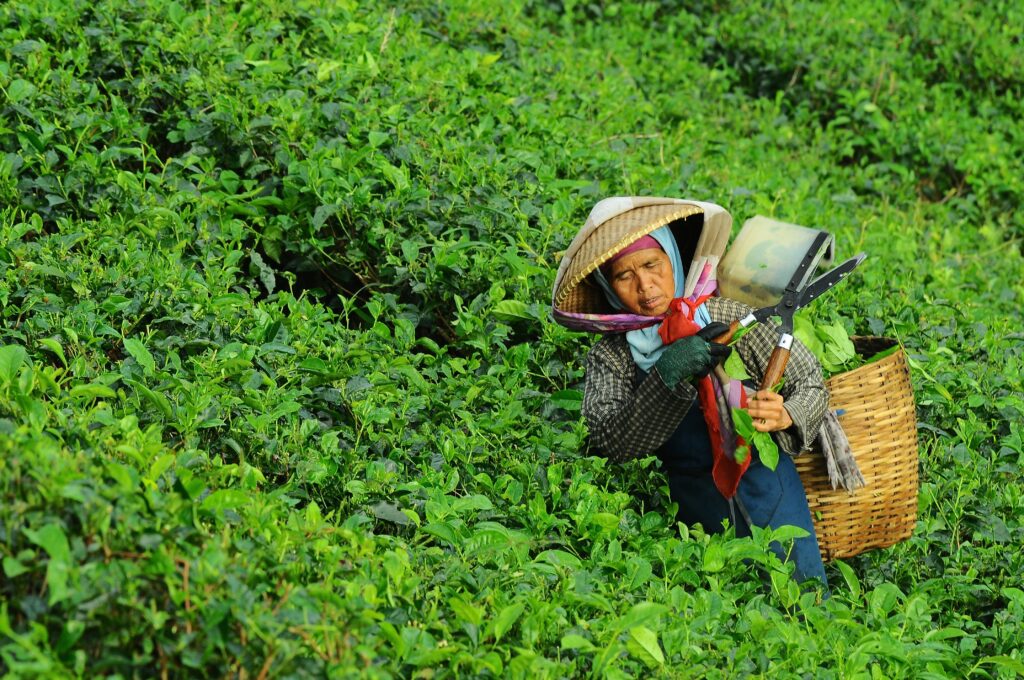Sustainable sourcing: Not ‘selfies with farmers’
International standards and regenerative farming are at the leading edge of sustainability when discussing the sourcing of herbs and botanicals. But at essence, promoting sustainability begins with evaluating and understanding what is needed most to sustain and improve supply.
Blake Ebersole | Aug 11, 2020 | Natural Products Insider

Sustainability means a hundred different things to a hundred different people. According to Wikipedia, sustainability is related “generally to the capacity for the biosphere and human civilization to coexist.” In ecology, sustainability may be considered the ideal balance between species and resources. Based on systems thinking, there’s three main dimensions of sustainability: environmental, social and economic.
Sustainability ideals
When it comes to natural products for food and health, it gets more interesting. Ideals related to sustainability can be a double-edged sword. Case in point: genetically modified golden rice, rich in vitamin A, could help prevent blindness from vitamin A deficiency in developing regions. GMOs may be more drought resistant or require less pesticide usage. Yet there can be downsides in the practice of farming GMOs. The GMO discussion exemplifies the point that whether practices are sustainable depends on what definition of sustainability is being applied.
There’s no doubt that the ideals of sustainability are worthwhile, because we can’t keep using up all our fossil fuels and polluting oceans until it’s too late. However, there’s no small amount of controversy related to how best to achieve these ideals.
There are international standards for measuring environmental sustainability. ISO 14040 is the standard often used for measuring environmental impact of food and agricultural production. It focuses particularly on greenhouse gas emissions and water usage, along with health impacts. Evaluation based on this ISO standard tracks an input of a given product from seed to shelf and can be used to provide an “apples to apples” comparison.

Some nutrition products, like the meal replacement brand Soylent have sponsored an independent Life Cycle Assessments (LCA) study required by this standard. The benefit is that cogent, quantitative conclusions and comparisons can be made about the environmental impact of their products.
Regenerative farming practices have arrived at the front of the sustainability discussion. While the ideals of regenerative farming are great and noble, regenerative is still a work in progress science-wise, mainly because the impact of regenerative practices are difficult to measure and compare. A single practice sits within a web of interdependent practices, so it may be regenerative on one farm but destructive on another. For example, no-till farming can increase soil carbon content and reduce nutrient runoff, but only when combined with other regenerative practices, like row cropping.
In successful cases, regenerative practices are developed by farmer “hubs” local to a specific region, who work together to define a set of practices geared toward a particular crop. The Savory Institute is one example among many which are actively developing programs, education and standards in various regions.

When it comes to sustainable sourcing of herbal and botanical products, there’s more to the effort than just throwing paper towels into a crowd or taking selfies with farmers. There’s actual work involved that takes time—often years.
Promoting sustainability begins with evaluating and understanding what is needed most to sustain and improve supply. Generally first are independent field visits to interview farmers and collectors. In high-poverty rural areas, some of the most common needs are very basic—hand tools, medical support and education. Only after we have traced the supply back to a particular farm and the source has undergone the basic needs evaluation, and we have worked to meet those basic needs, then (maybe) can we start talking about the lofty ideals like certifications, or organic, or regenerative. Maybe.
Much of our work on sustainable supply at NaturPro has involved developing the very basic recommendations, evaluation tools and checklists needed to get the baseline facts from global supply chains about sustainability. Our initial farm evaluation checklist is simple, with only about 10 questions. Despite being so simple, very few completed checklists are ever returned with any worthwhile information. If and when the basic questions are answered, we can graduate from kindergarten to first grade. Sustainable sourcing is not overnight and improving sustainability of supply chains is an investment that takes years until the payoff.
So, what’s the payoff for all this work?
As the few CPG firms fully engaged on the farm level can vouch (Nutrilite and MegaFood come to mind) the payoffs can be big. On the supply side, you can truly assure quality and consistency of supply, instead of just throwing darts while blindfolded. You can optimize your raw material quality and quantity, anticipate and fix supply problems before they happen, and reduce rejection rates and testing costs—all while ensuring a consistent supply, year after year.

On the marketing side, showing your consumers exactly where their elderberries are grown and the farmer who grew them offers incredible value that more and more consumers are willing to pay a premium for. Having a real, impactful sustainability assessment is marketing gold, since it provides a level of detail and credibility you can’t get from “photo-op audits” that are all too common.
And the biggest payoff—which is rarely considered as part of the bottom line—is the comfort of knowing that your berries aren’t picked using forced labor or child slaves.
Sustainability means different things to different people, but there’s one thing it definitely is not: a photo-op. In evaluating and improving supply sustainability, real benefits come from real investment.
Sorry, the comment form is closed at this time.